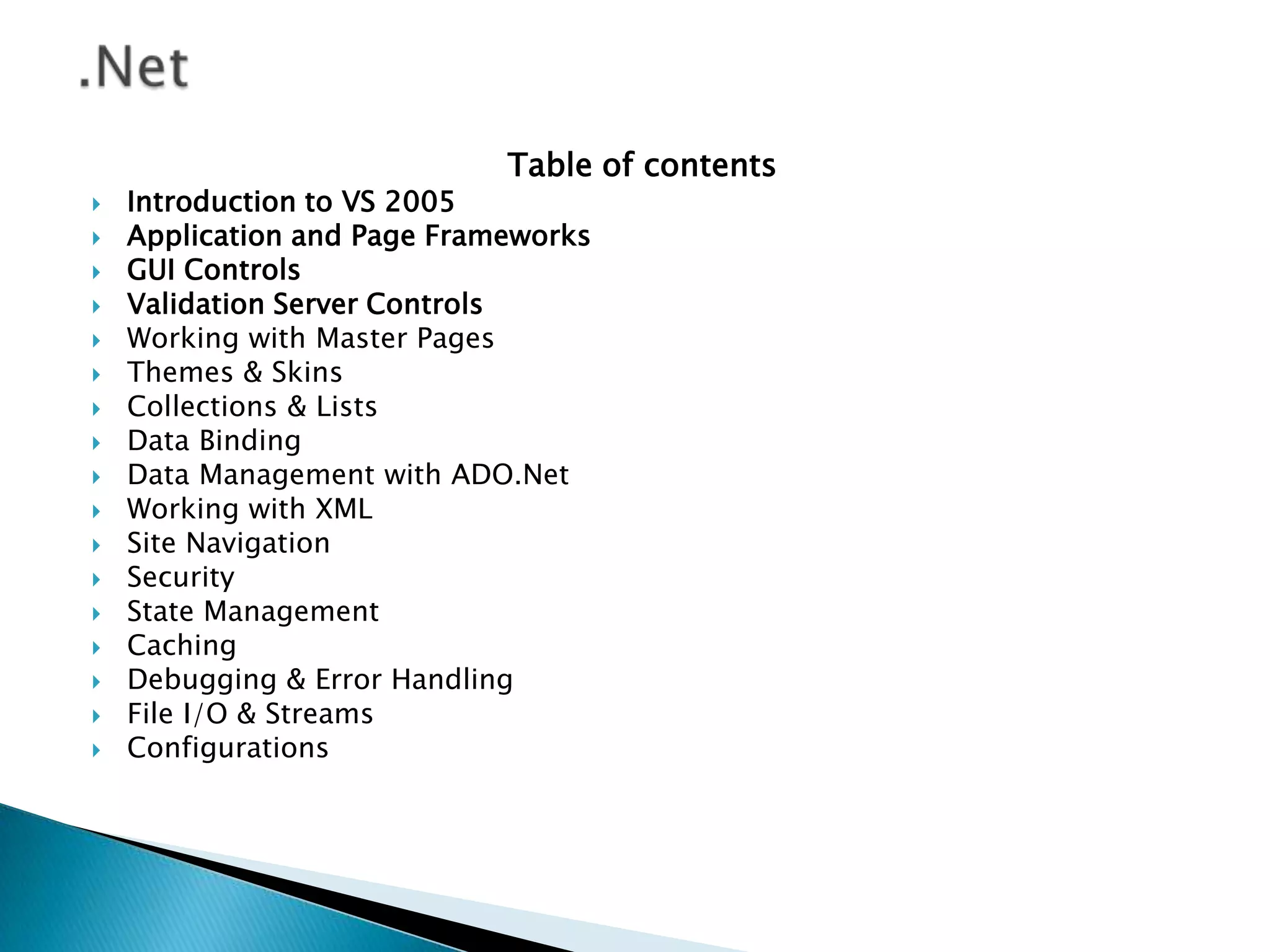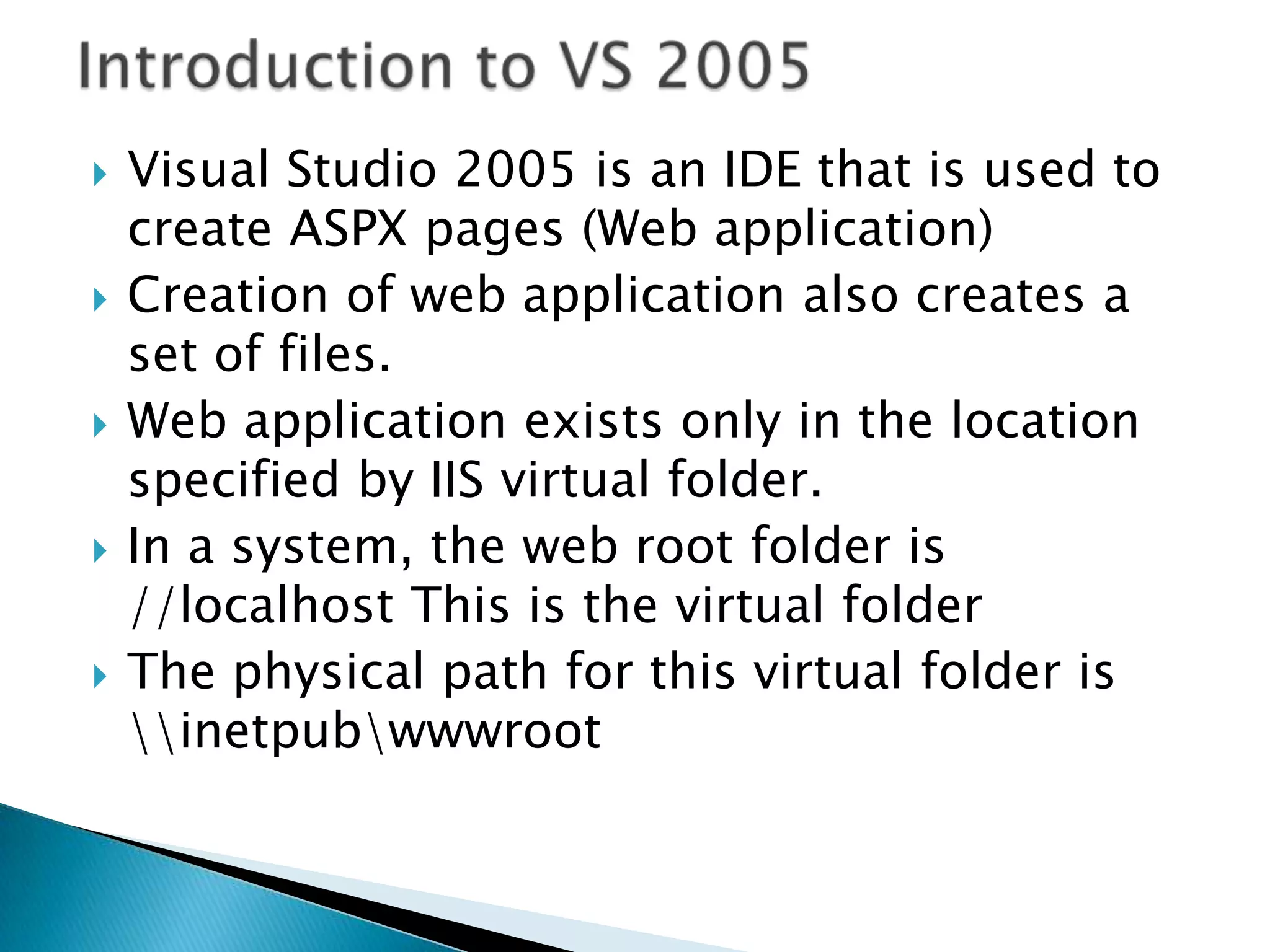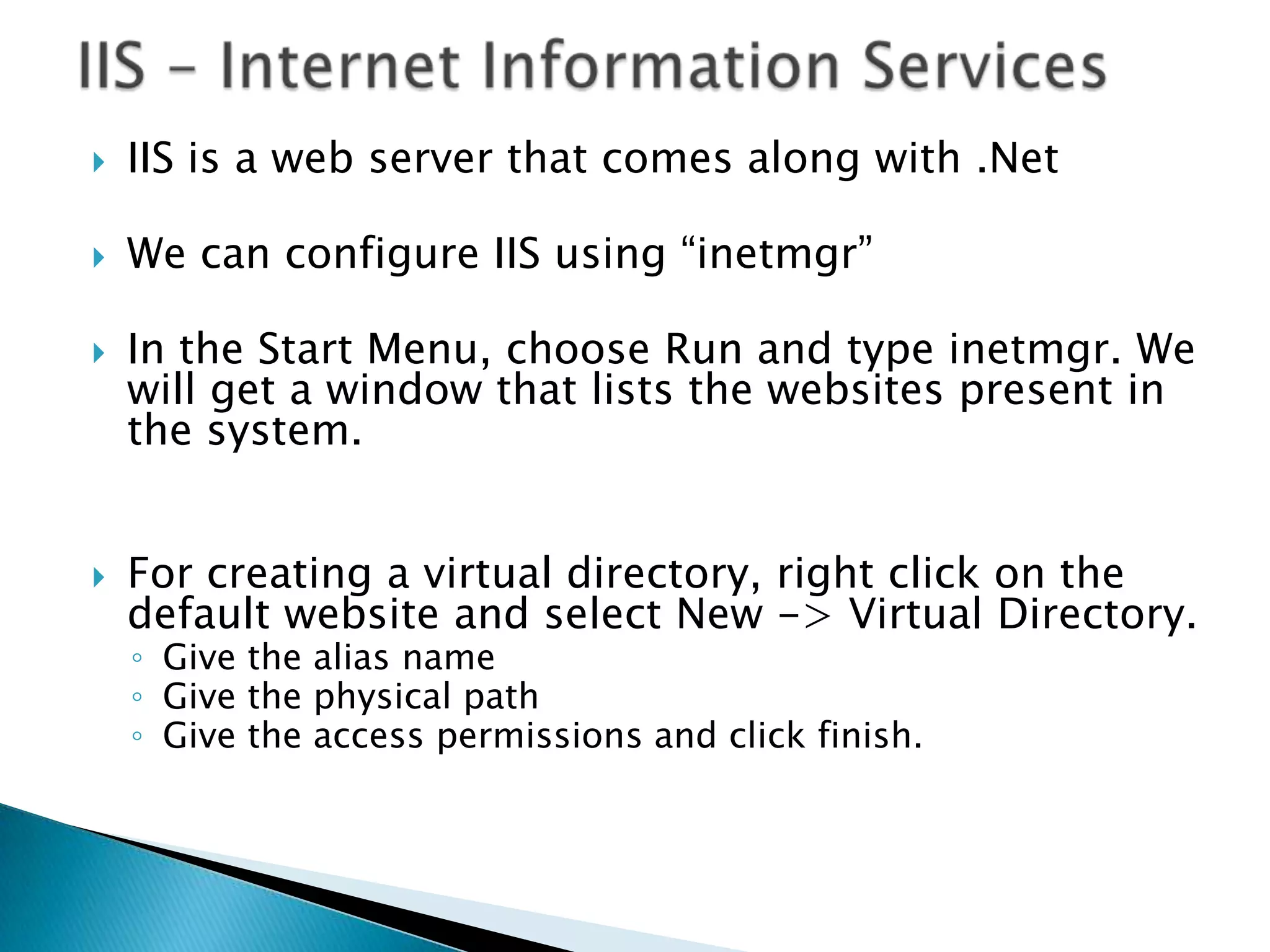The document discusses various topics related to ASP.NET including Visual Studio 2005, ASP.NET framework, page lifecycle, controls, validation, user controls, data binding, and common data types. It provides an overview of creating and working with ASP.NET web applications and pages in Visual Studio.

































